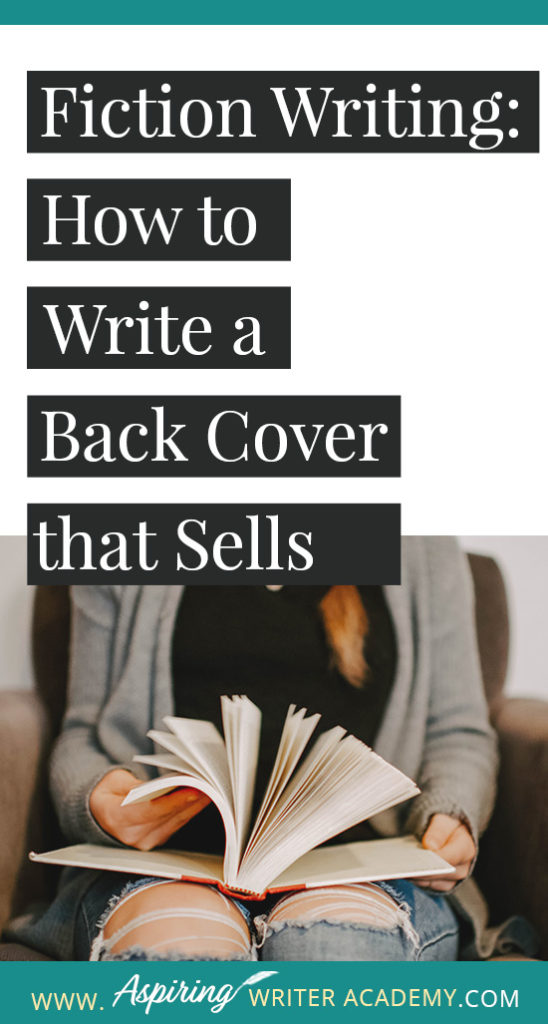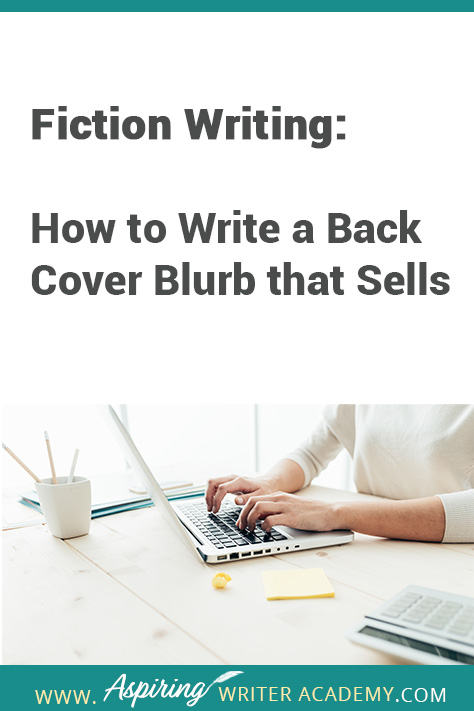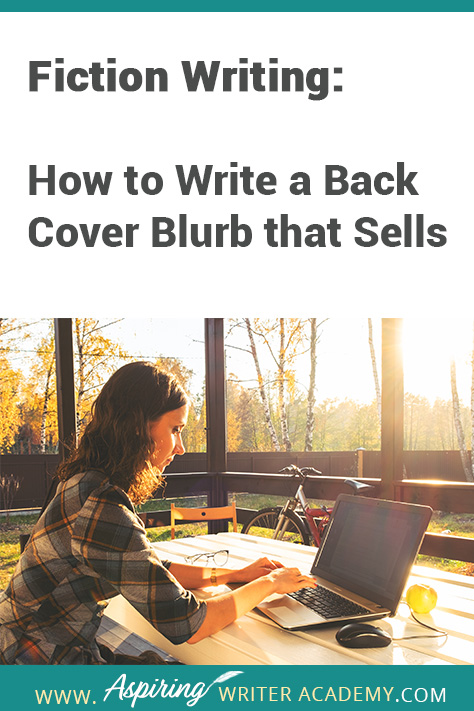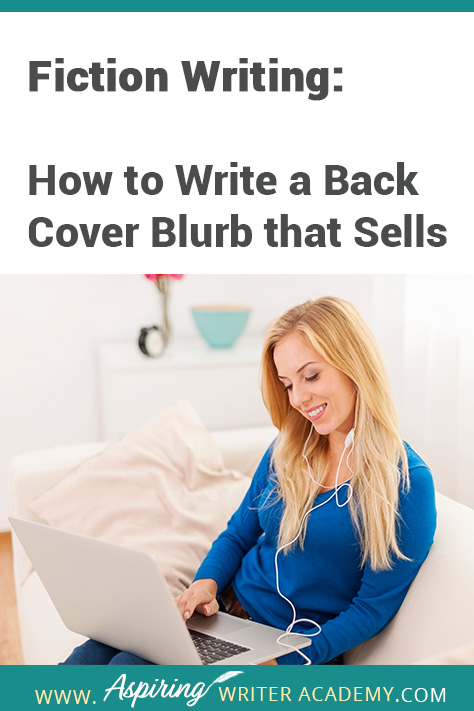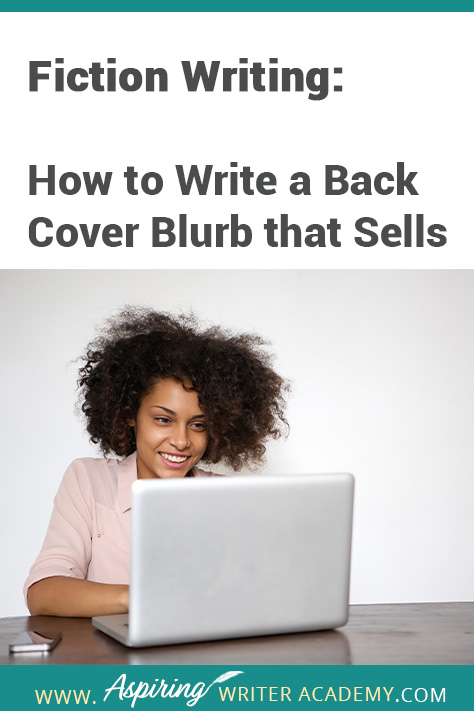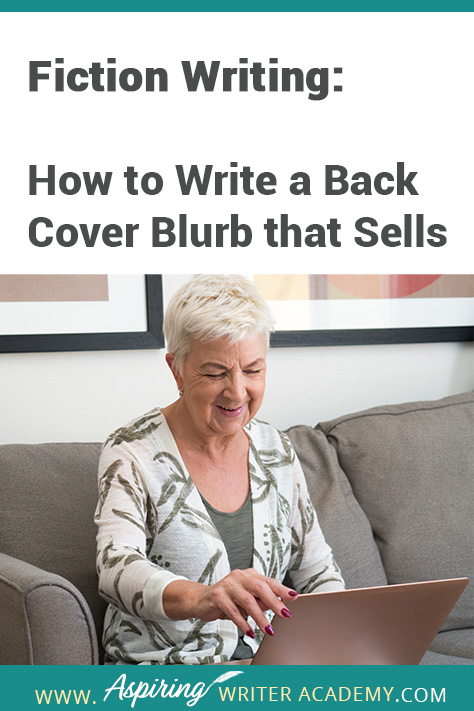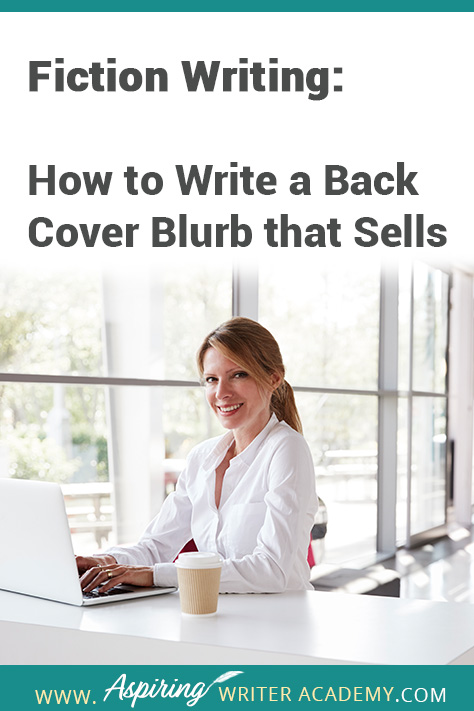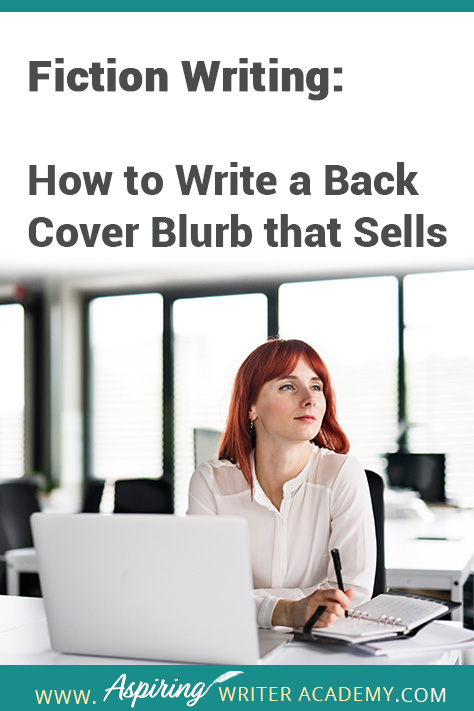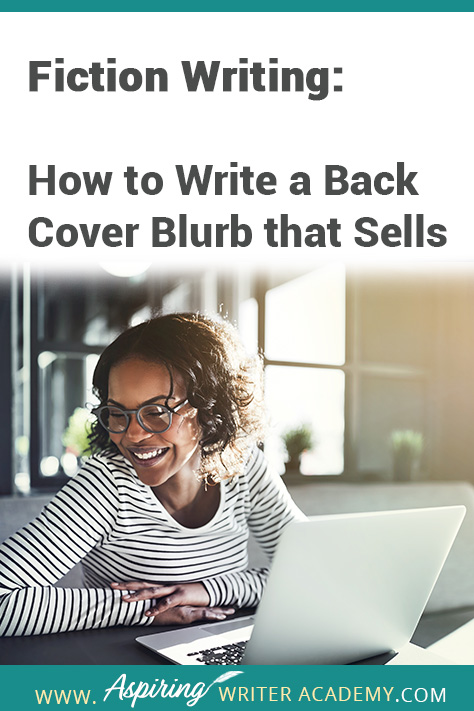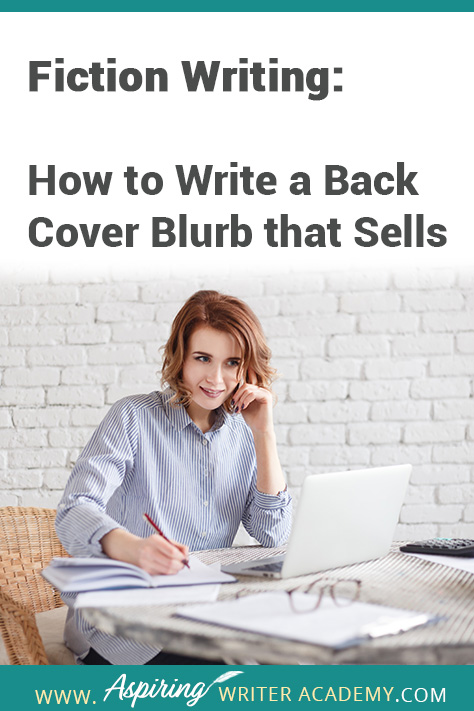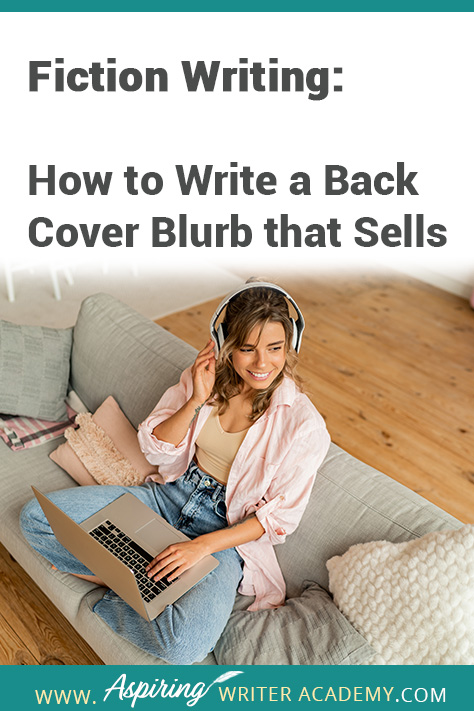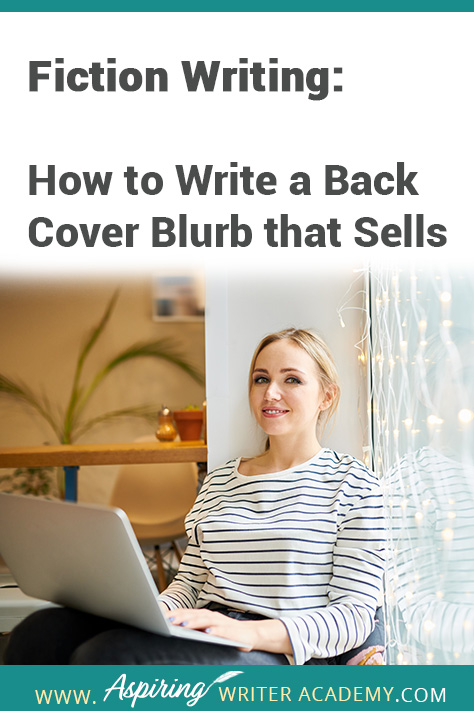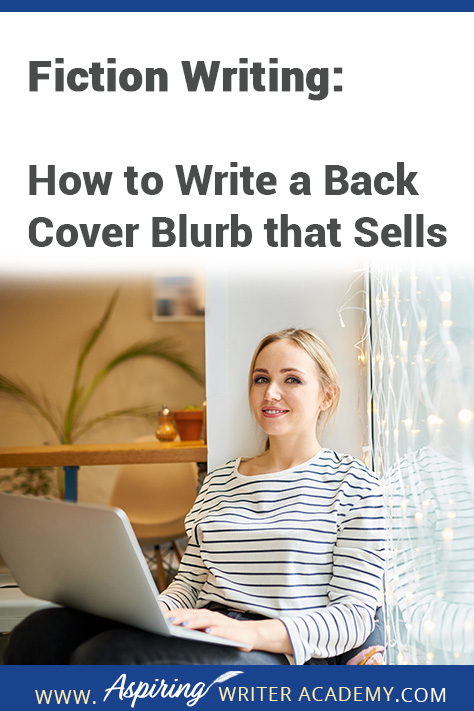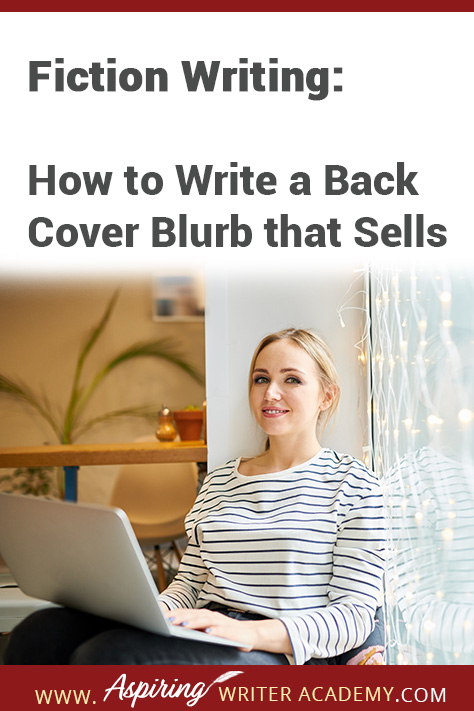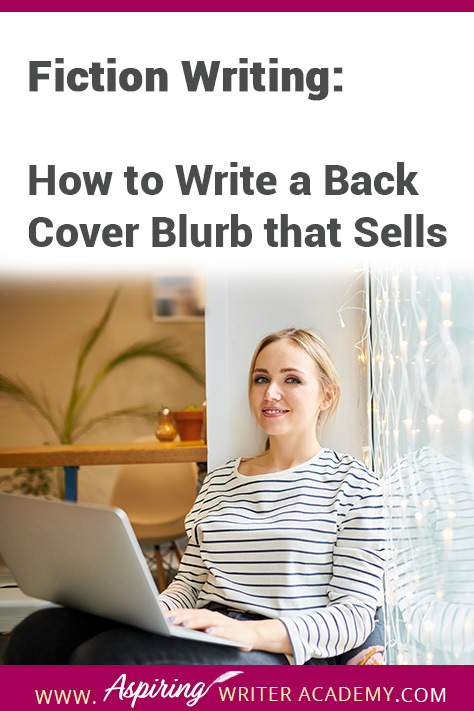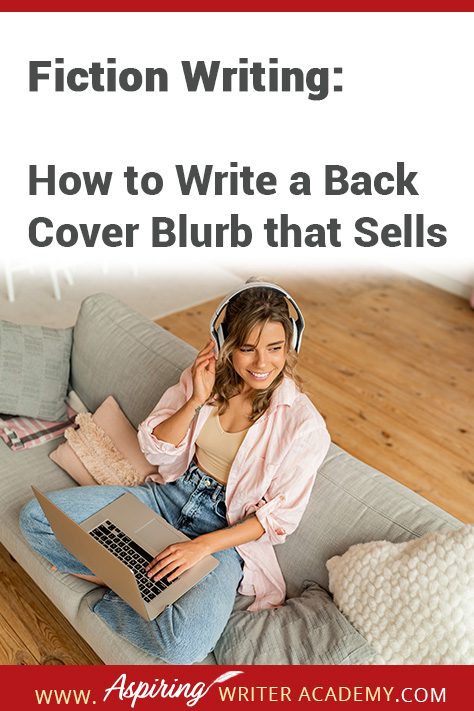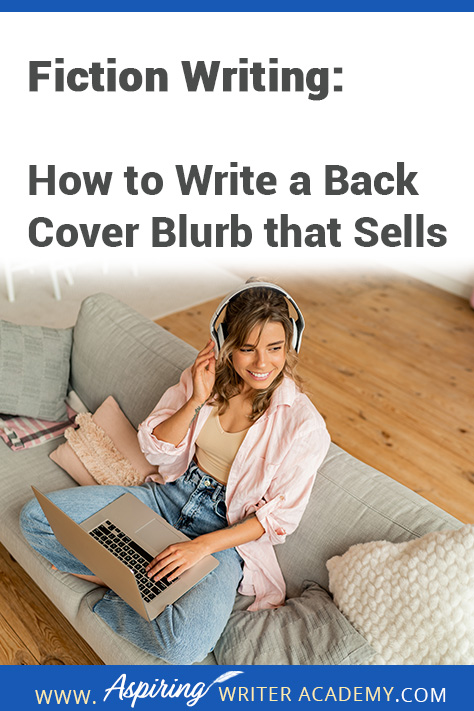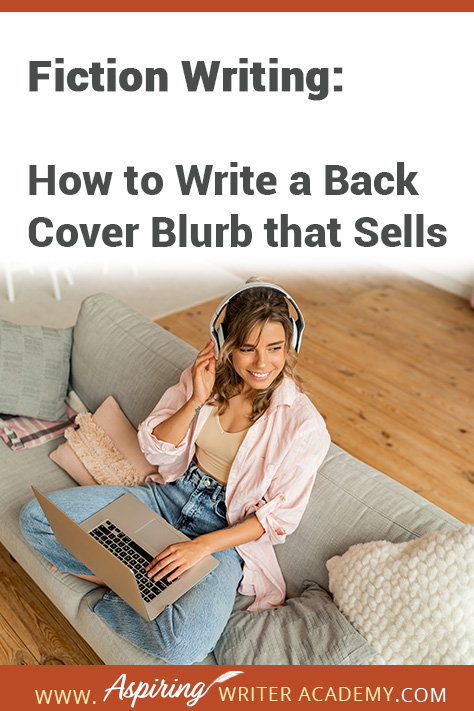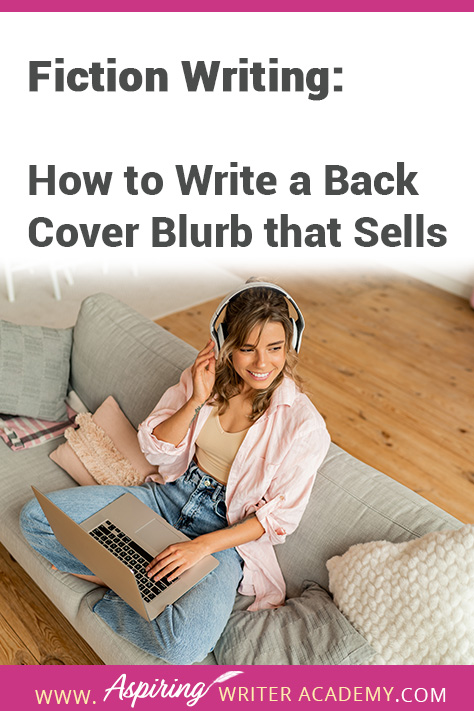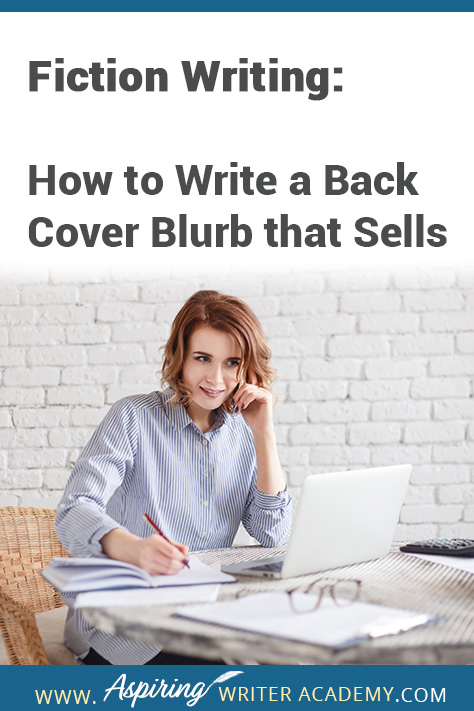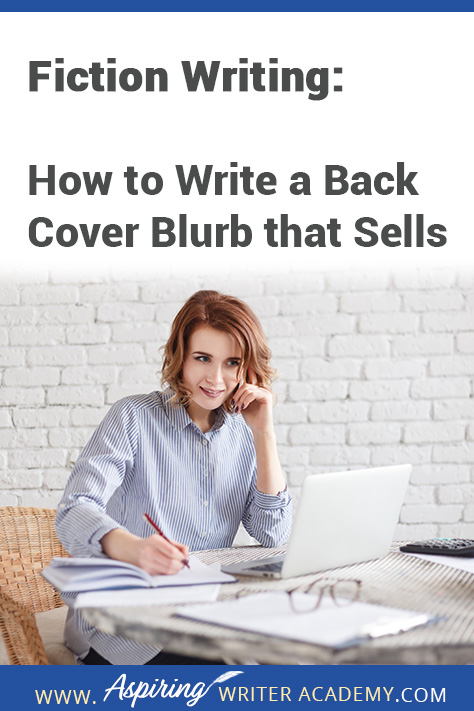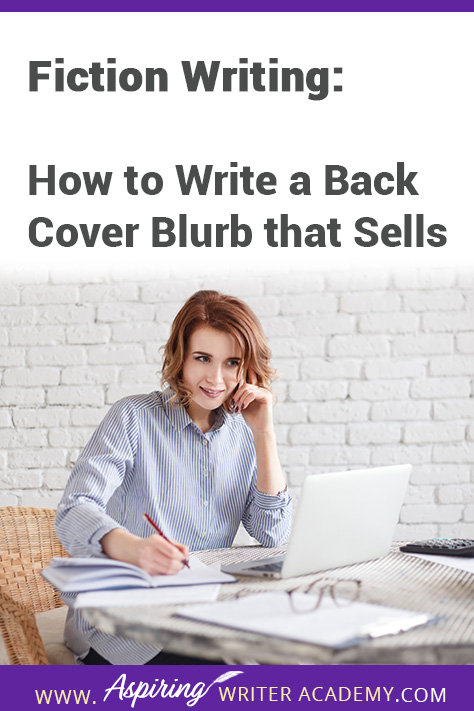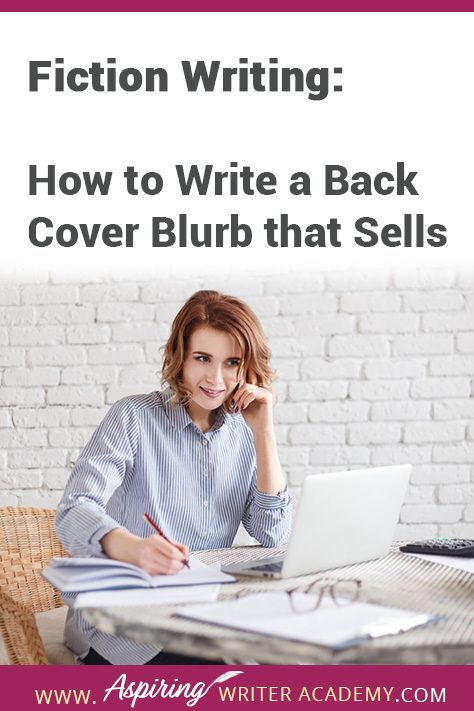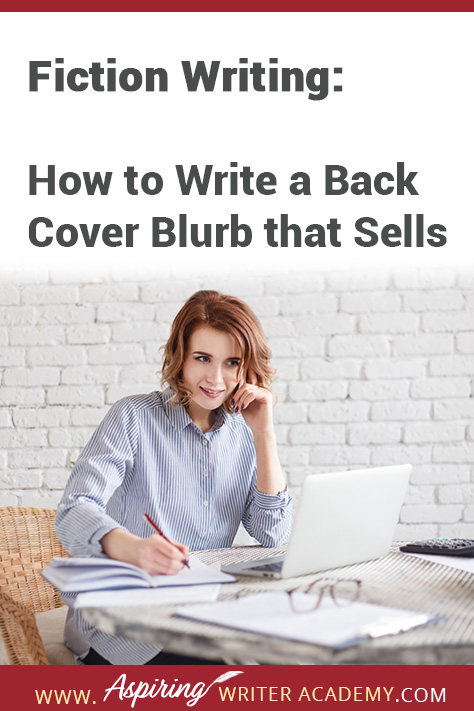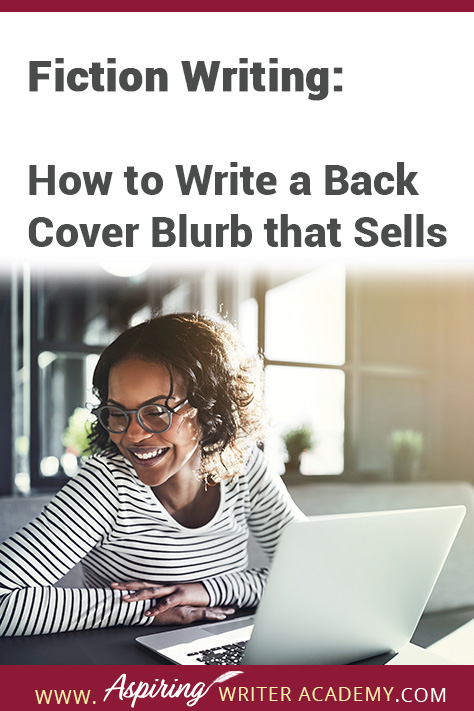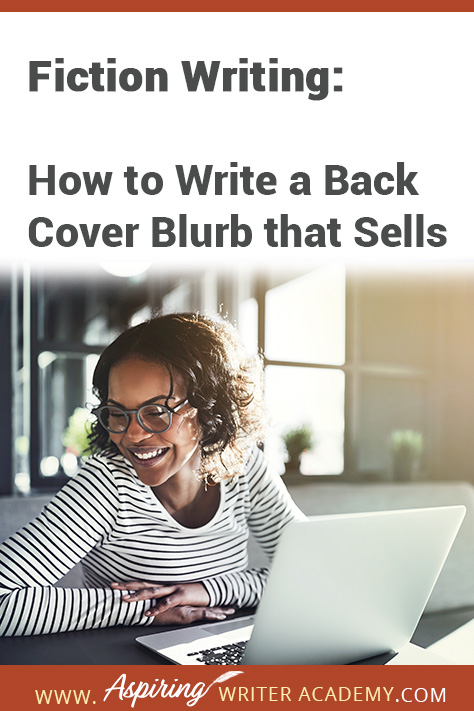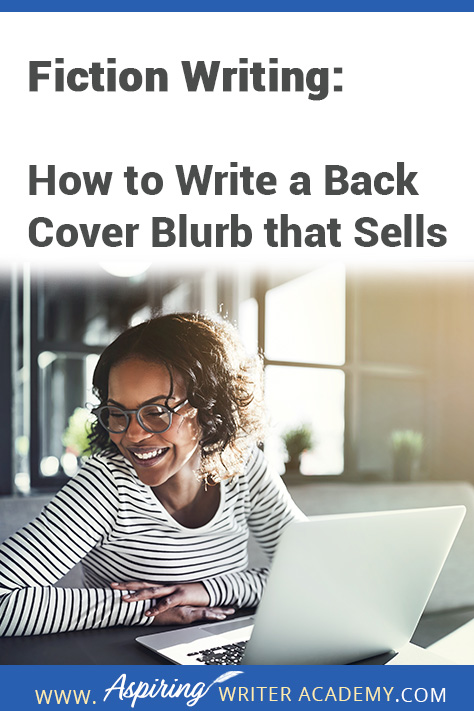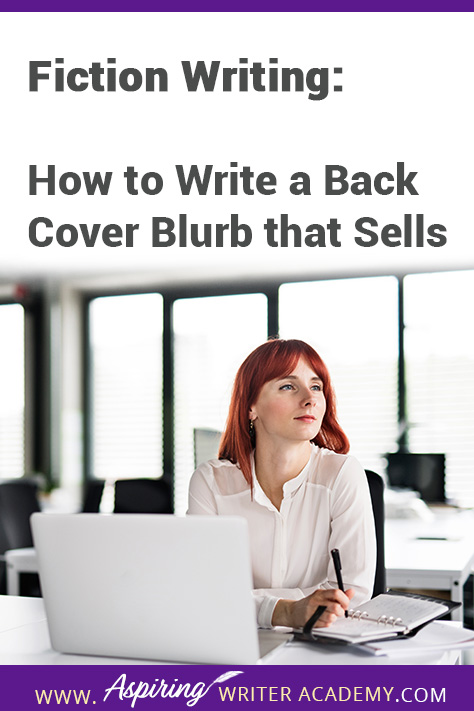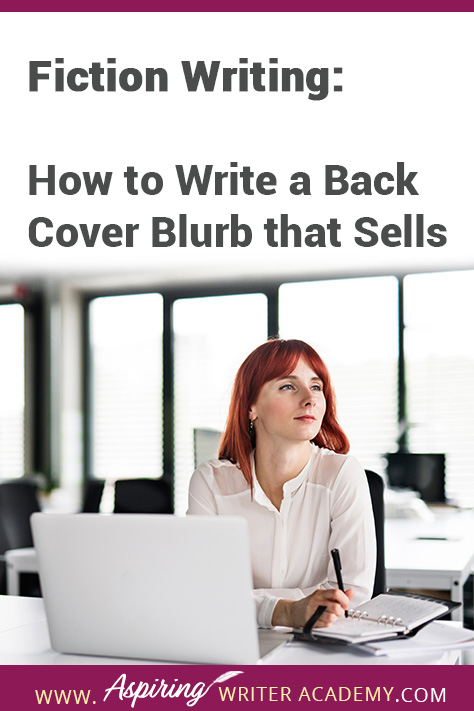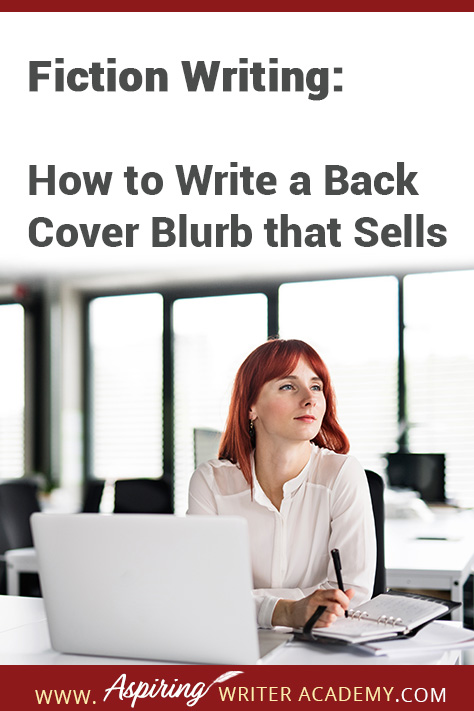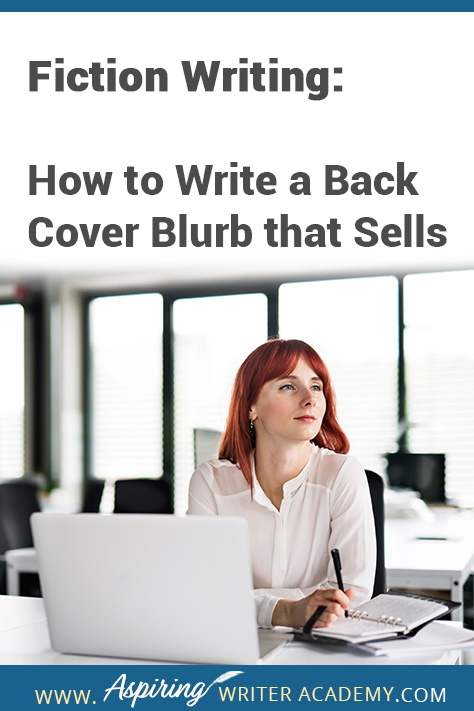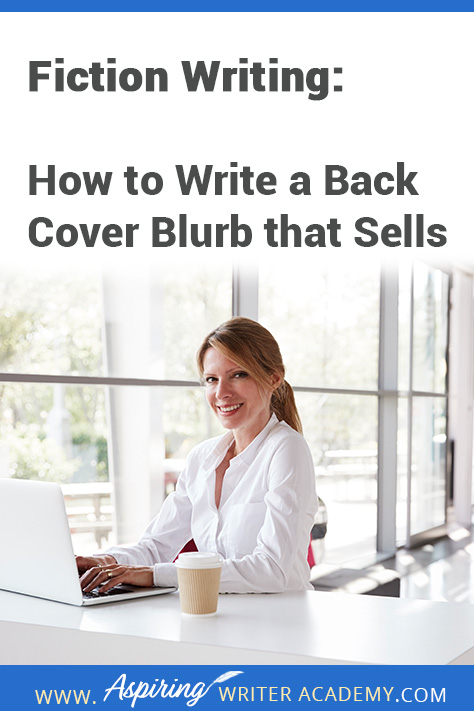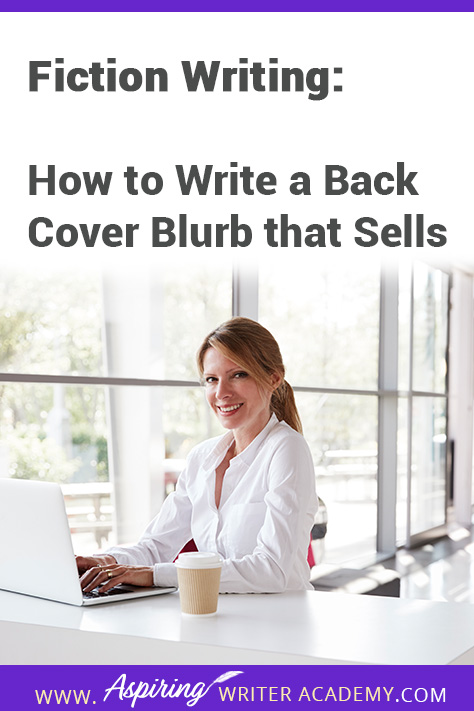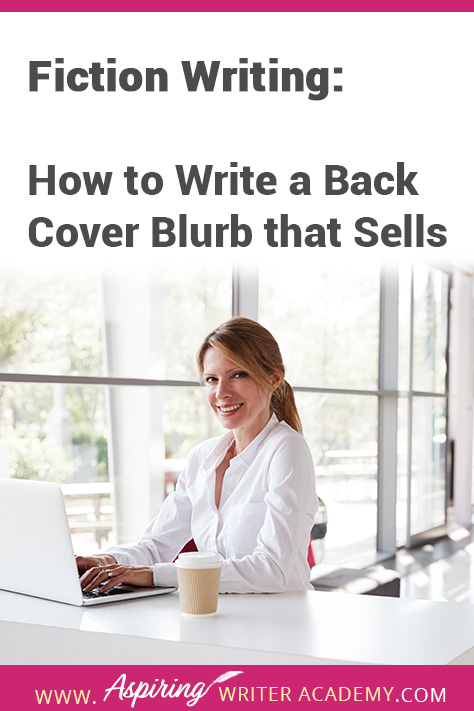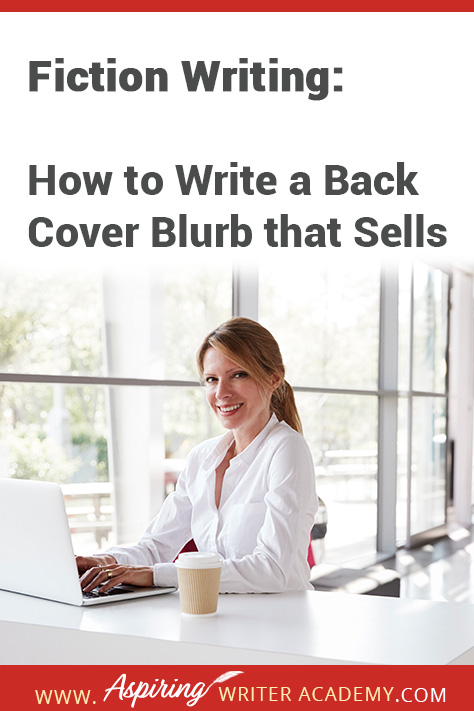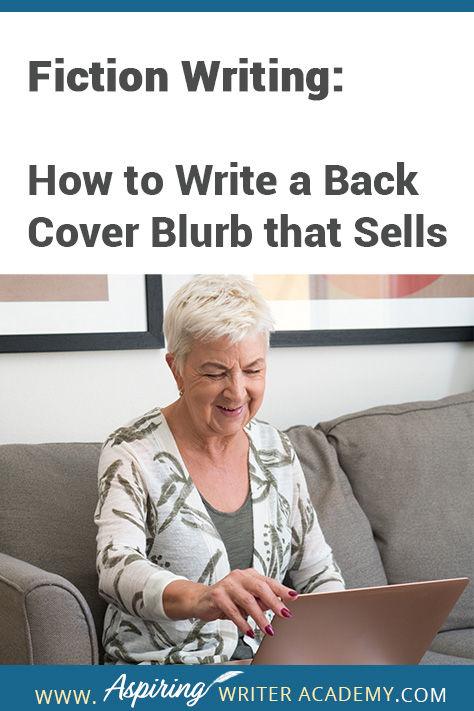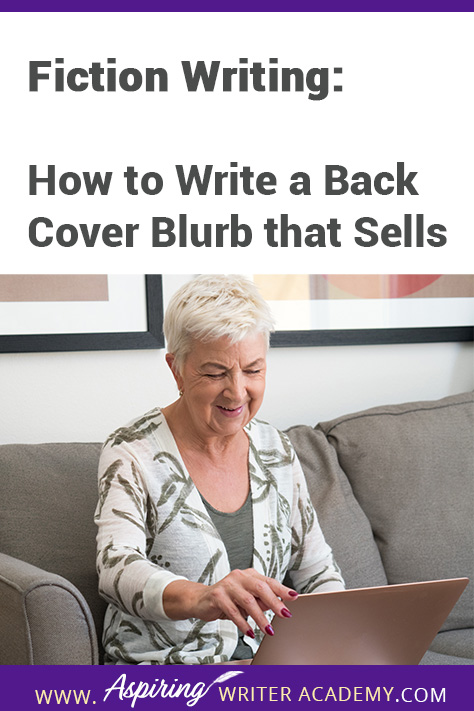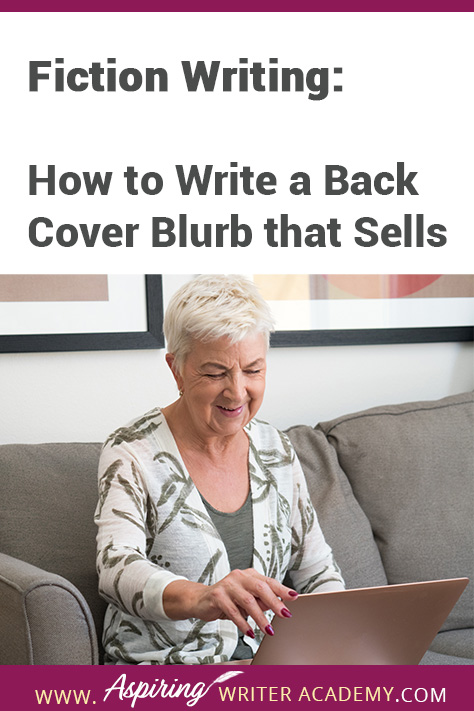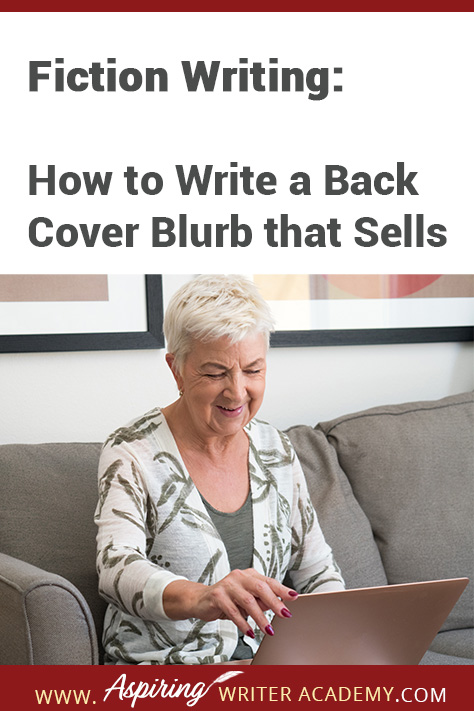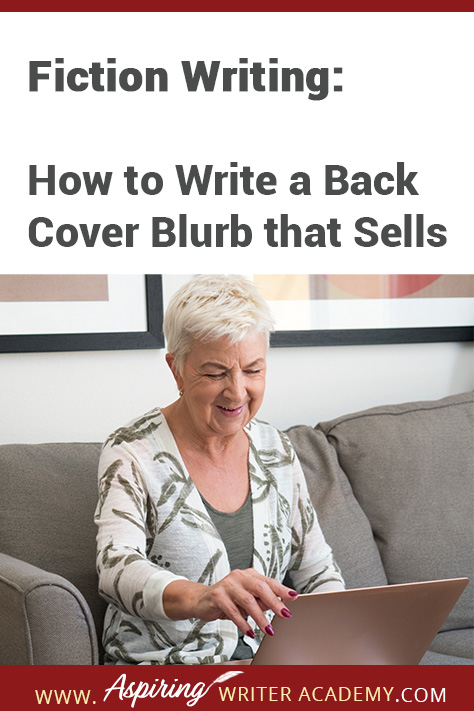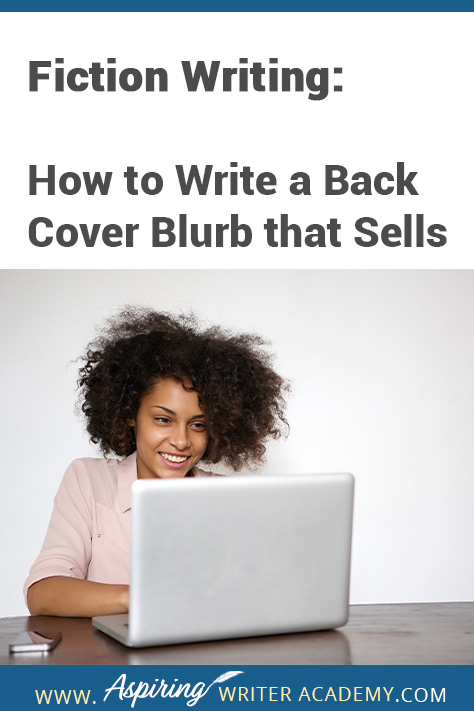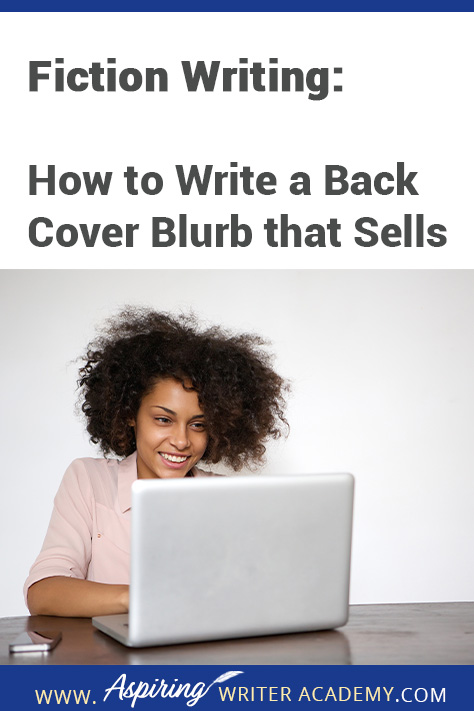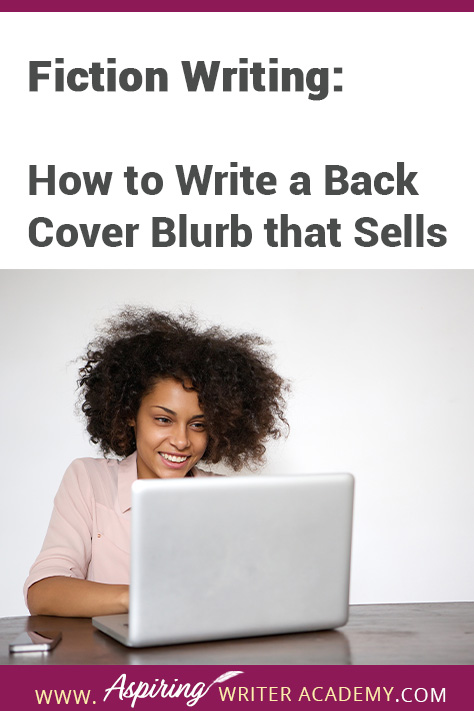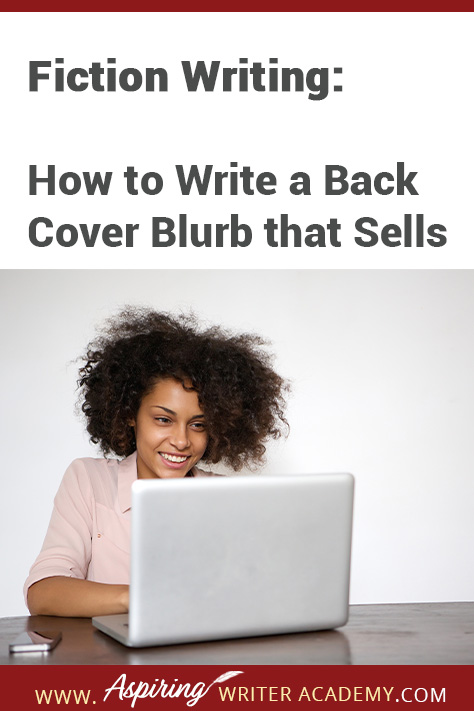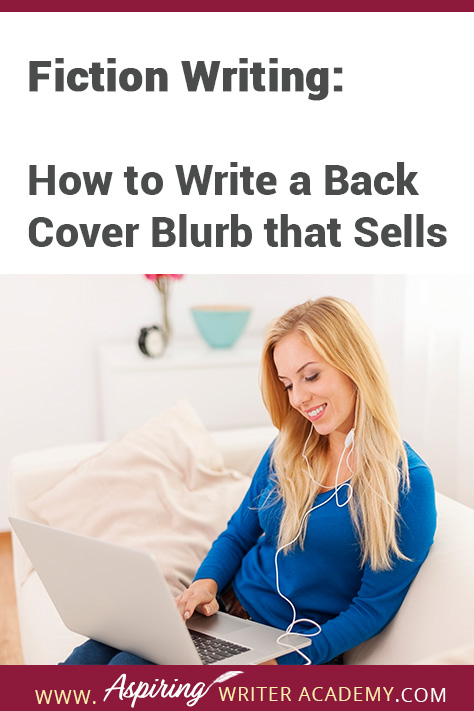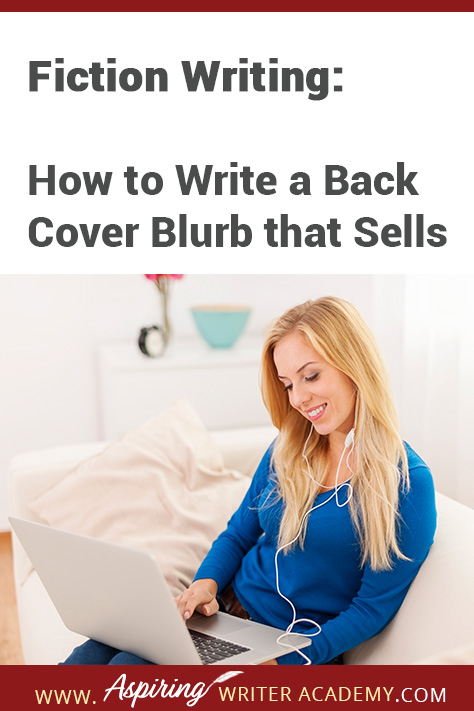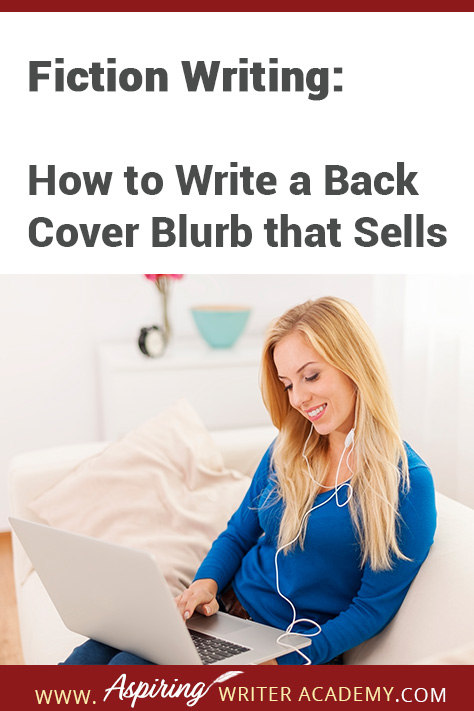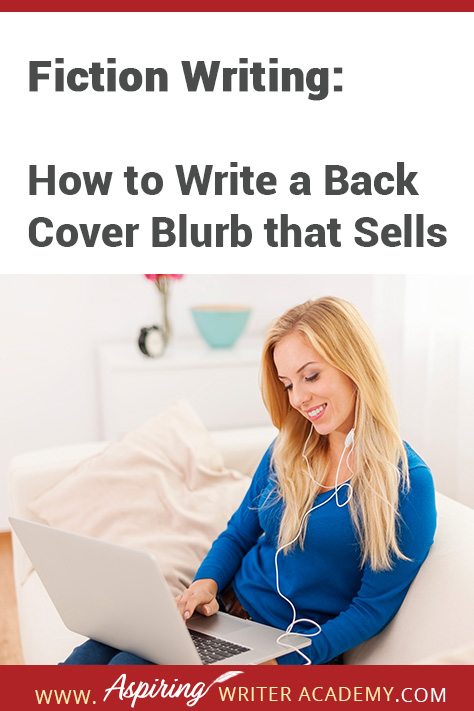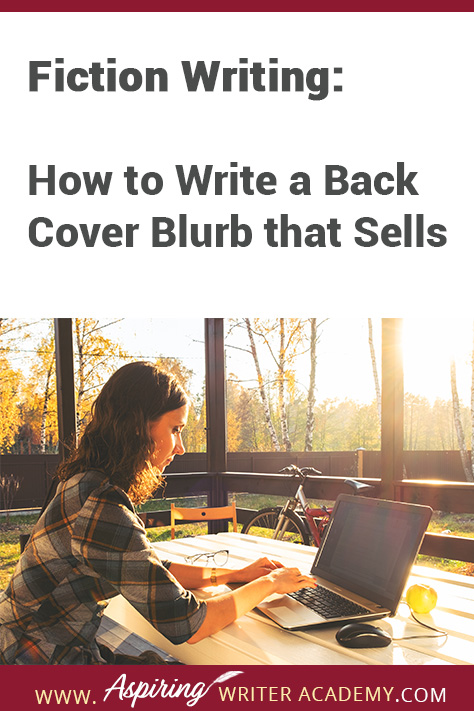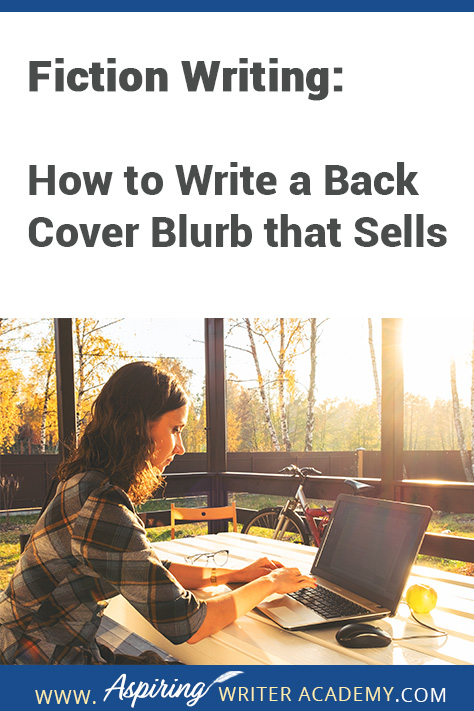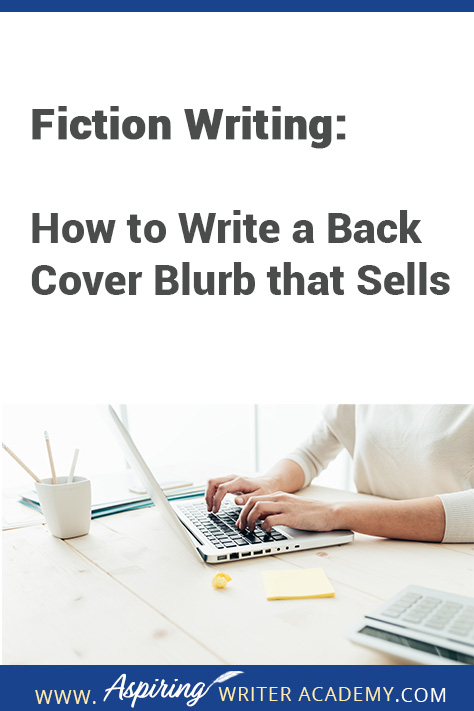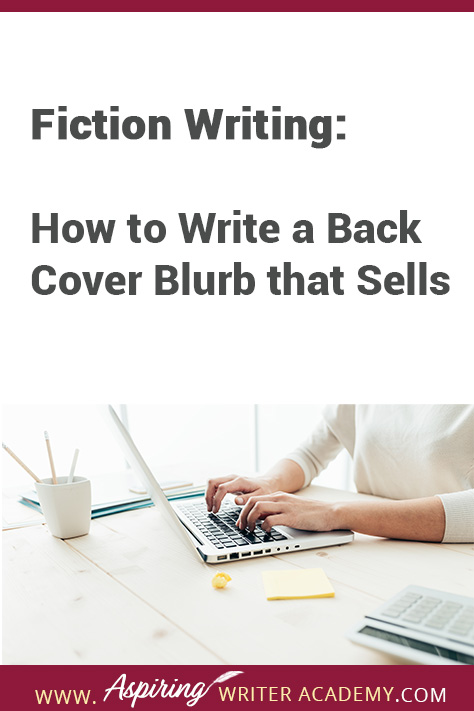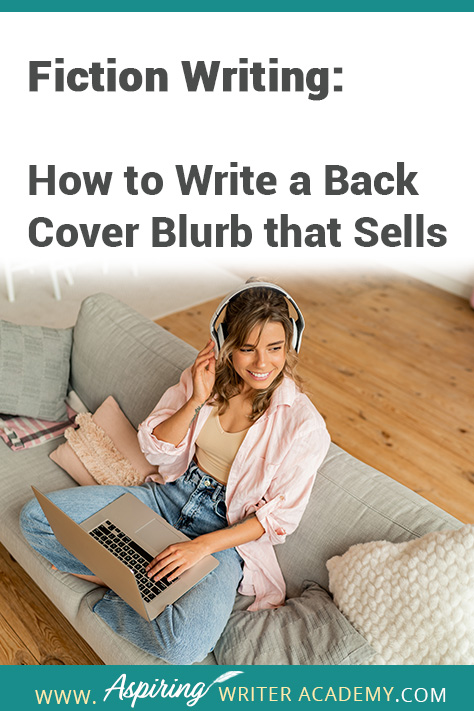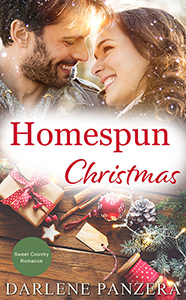Fiction Writing: How to Write a Back Cover Blurb that Sells
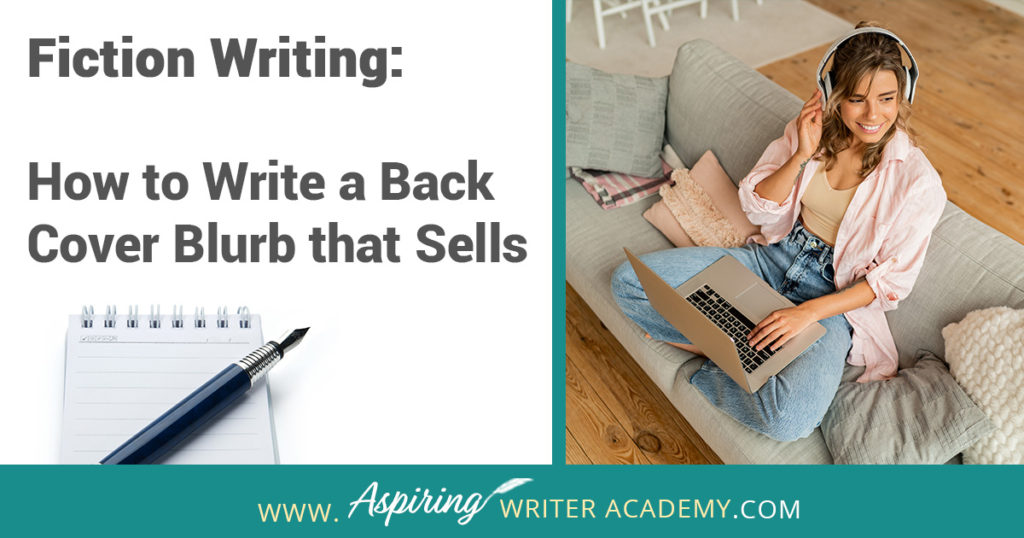
Do you have trouble coming up with back cover blurbs for your story? Do you wonder what should be included or struggle with the wording?
Writing a back cover blurb can be both overwhelming and time-consuming as you try to summarize a 400-page book in just a few short paragraphs. I know that I have spent endless hours, sometimes days, tweaking the words again and again. Sometimes, I end up with dozens of different versions.
So how is an author to know when they have got it just right?
In this post, we will discuss the needed components and give you a template to construct each paragraph, so that you will have the best chance of writing a back cover blurb that entices the reader and convinces them to buy your book.
First, let’s look at the purpose of a back cover blurb.
What if I am traditionally published? Doesn’t the publisher write one for me?
The main purpose of a blurb is to sell the book. When a reader picks up a book in a bookstore, they will typically look at the cover, then flip the book over to see the back cover copy—the summary of your story, to see if they think it is something they would like to read. Often it is these two items—the cover and the back cover blurb—that will convince the reader to buy.
The same applies to books bought online. The reader will look at the cover and read the blurb. If the reader is undecided, they may also choose to read the first page. This is why many online eBooks offer the viewer to “Look inside!” and read the first few pages for free.
So, the writer’s goal is to write the most interesting—yet accurate—summary of their story as they can!
In the past, if you had your book traditionally published, the publisher would have their in-house team write a back cover blurb for you.
The publisher for my first two books did this for me. They usually let you review the text before it goes to print. By the time I was ready to publish my third book, I realized some of the lines of the blurb that the publisher gave me did not match up with my story. This is because no one knows the story better than you, the author. The person who the publisher had assigned to write my back cover blurb didn’t know what my book was really about.
I kindly brought this to the attention of the head editor and gave her my own alternate version that better reflected who my characters were and what they were up against as they tried to overcome the opposition and solve their dilemma. Luckily, she too liked my version a whole lot better and that was the blurb they used.
After that, the publisher gave me permission to write all of my own back copy blurbs. This gave me the freedom to write accurate descriptions of my story and it also saved the editorial team time so they could concentrate on other tasks. A win-win.
While some publishing houses still write the back cover copy for their authors, many authors are increasingly writing their own. And if you are self-publishing or working with a small press (with a smaller budget), it is vital to know how to write back cover blurbs yourself instead of relying on others to do it for you. Strive for quality and a back cover blurb of high caliber.

How do I write one?
First, there is no set rule on how to write a back cover blurb. Many authors will each tell you their own way of doing it and I have tried multiple methods myself. In the end, it all comes down to what will sell the story.
However, most blurbs introduce your main characters, reveal what they want, why they are having trouble getting it, and hint at what will happen if they fail.
The most important thing to remember is—don’t give away the ending.
If you tell the reader too many details, they won’t feel the need to buy the book.
Now, let’s look at the beginning. Above the summary of the story, you may want to tease the reader with an interesting phrase, quote, accredited review, or a great one-liner that acts like a hook. This is not actually part of the back cover blurb and is usually set apart in bold or italic lettering.
In my experience, the book blurb should consist of three paragraphs.
1. The first paragraph introduces the main character, and their goal (what they want or hope to achieve).
2. The second paragraph tells the reader what is making the achievement of this goal difficult. What is the problem this character is facing? Who or what is opposing them and why?
3. The third paragraph summarizes the character’s plan to overcome the opposition and reveals what is at stake if they fail. What does the main character need to do to succeed? What are the consequences, the loss your character will face if he/she does not achieve their goal?
Does it matter? Will it hook the reader without giving away the ending? Is it enticing enough to make the reader want to buy your book?
For those who are familiar with story structure, the third paragraph often details the inciting incident that launches the characters into the events of the story. This is the main problem or obstacle presented by the opposition that the main character must overcome during the course of the story or (something bad) will happen! What are the stakes?
It would be a very good idea to read your blurb to a few people you trust to give you honest feedback before sending your book off to the publisher.
What if I am writing a story with two main characters like a buddy story or a romance?
The blurbs for these kinds of stories tend to be written a little bit differently.
1. Paragraph one should introduce the character with the biggest Some romances lean toward the heroine’s point of view and others lean toward the hero’s point of view in terms of page time. Who has the most to lose? Who is the story really about? Usually, one character is favored on the page slightly more than the other.
Introduce character #1, their goal (what they want or hope to achieve) and their motivation: why is this important to them?
2. Paragraph two, introduce the secondary character (the buddy, friend, family member, or romantic interest if it is a romance) and their goal (what they want or hope to achieve) with their motivation: why is this important to them?
3. Paragraph three will reveal how they might need to work with one another to overcome the problem between them or perhaps they need to defeat a common enemy who is trying to thwart their plans. Why do they need each other? What are the consequences if they do not succeed? What are the stakes?
Here are a couple of examples from some of my own stories to help you:
Title: The Cupcake Diaries: Sweet on You
Back Cover Blurb:
Andi Burke (main character) has a dream—a kitchen big enough to dance in, regular income to support her daughter, and a chance to find true love. So when she enlists her sister Kim and their bubbly best friend Rachel to help open Creative Cupcakes it all seems perfect. (personal goal)
Especially when hunky local reporter Jake Hartman (character #2/love interest) offers to finance the store for them. (his personal goal) Andi hasn’t dated since her divorce, (main character #1’s personal problem/motivation) but the way Jake keeps looking at her might make her change her mind. After all, what could go wrong? (romantic conflict)
Plenty! There is a shady tattoo parlor behind their shop, a crowd of crazy Zumba dancers out front (chanting “Lose the fat, dance with Pat!”), and about the only thing going right is Andi’s romance…until Jake’s media crew captures a story that could shut the two of them down forever.
Details opposition who are directly opposing main character’s goal of opening cupcake shop. She and romantic interest work together to overcome problem until consequential cliffhanger that threatens the heroine’s goal and relationship with love interest.
Title: Homespun Christmas
Back Cover Blurb:
Cassie Sutherland (main character) can’t wait to see the look of surprise on each of her family member’s faces as they open the expensive store-bought gifts that she’s brought back to the Pennsylvania farm for Christmas. (personal goal/motivation: happiness)
Except her mother (opposition to main character’s personal goal) wasn’t joking when she said they were only to exchange handmade items this year. Now Cassie has only one week (ticking time limit) to come up with new gifts for her family and she’s short on ideas. (launches story problem the main character must overcome/she creates new story goal of making new gifts and it is hinted from first paragraph that if she fails, her family will not be surprised, and the main character will not be happy. Her happiness and happiness of her family is at stake.)
Can Logan Whitaker, (romantic interest) the new owner of the garden shop who leaves her breathless every time he gives her one of his big, endearing smiles, help Cassie discover God has an even bigger plan for her this holiday season? (They work together to overcome her story problem and it is hinted there may be something significant the main character will find instead. The hook is that the course of her life hangs in the balance.)
Title: Montana Hearts: Her Weekend Wrangler
Bree Collins (main character) has finally come home to Fox Creek, Montana, to manage her family’s guest ranch. (personal goal) She knows she can handle any challenges that come her way, but when the infuriating Ryan Tanner reappears in her life, Bree suddenly has doubts about her ability to stay professional—and away from the handsome cowboy. (problem)
Ryan Tanner (character #2/romantic interest) is in a bind. He needs to train a young foal for the upcoming show, (personal goal) but its mother would rather bite his hand off. Just his luck the cute cowgirl from his past arrives back in town. Bree just so happens to have a reputation for taming animals of this nature. Ryan is willing to make a deal with her, but he has no intention of being swayed by her sweet smile or the tenderness she shows his young son. (problem)
Yet when fate brings them together, (they come together to solve their problems) falling for one another becomes the easiest thing in the world. Ryan might just want to wrangle this cowgirl’s heart…but will Bree give him the chance? (consequential cliffhanger hook with consequences hinted they will lose the love of their lives if they fail)
Final tips:
- The best way to gain a good grasp for writing back cover blurbs is to read as many as you can, especially in the genre you are most interested in. Go into the bookstore (in person or online) or the library and take note: which blurbs grab you the most and why? What about them appeals to you? Study each paragraph and which elements are included. How are they the same or different?
- Shorter blurbs are better than long blurbs with smaller print. Some authors, (especially those who self-publish) try to cram too much text on the back of a book, but in most cases, this is not going to get you the sale. Try for short and concise. Go easy on the reader’s eyes. Make the text clean and simple to skim.
- And make sure the blurb ends with a challenging choice the character must face or a consequential cliffhanger hook that drives the reader to the sales counter with your book in hand so they can read what happens!
Do you find it difficult to create compelling antagonists and villains for your stories? Do your villains feel cartoonish and unbelievable? Do they lack motivation or a specific game plan? Discover the secrets to crafting villains that will stick with your readers long after they finish your story, with our How to Create Antagonists & Villains Workbook.
This 32-page instructional workbook is packed with valuable fill-in-the-blank templates and practical advice to help you create memorable and effective antagonists and villains. Whether you're a seasoned writer or just starting out, this workbook will take your writing to the next level.
If you have any questions or would like to leave a comment below, we would love to hear from you!
Our Goal for Aspiring Writer Academy is to help people learn how to write quality fiction, teach them to publish and promote their work, and to give them the necessary tools to pursue a writing career.

ENTER YOUR EMAIL BELOW
TO GET YOUR FREE
"Brainstorming Your Story Idea Worksheet"
7 easy fill-in-the-blank pages,
+ 2 bonus pages filled with additional story examples.
A valuable tool to develop story plots again and again.
Other Blog Posts You May Like
How to Captivate Your Readers with Scene-Ending Hooks
Fiction Writing: How to Name Your Cast of Characters
How a Mother-Daughter Team Came To Create Children’s Books
Scene & Sequel: The Secret to Plotting an Epic Novel
Scene & Sequel: The Secret to Plotting an Epic Novel (Part 2)
Writing Fiction: How to Develop Your Story Premise
12 Quick Tips to Write Dazzling Dialogue
10 Questions to Ask When Creating Characters for Your Story
Macro Edits: Looking at Your Story as a Whole
Basic Story Structure: How to Plot in 6 Steps
Writing Fiction: How To Keep Track of Time in Your Story
Behind the Scenes: Interview with the Authors of the “Sew in Love” Collection

is a multi-published author, speaker, and writing coach. She writes sweet contemporary, inspirational, and historical romance and loves teaching aspiring writers how to write quality fiction. Read her inspiring story of how she published her first book and launched a successful writing career.

